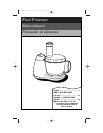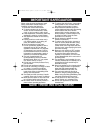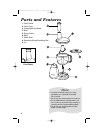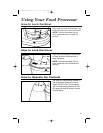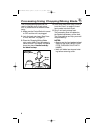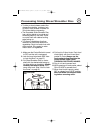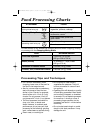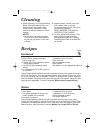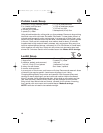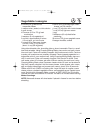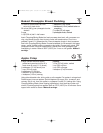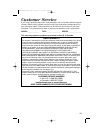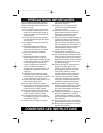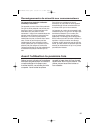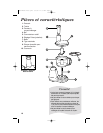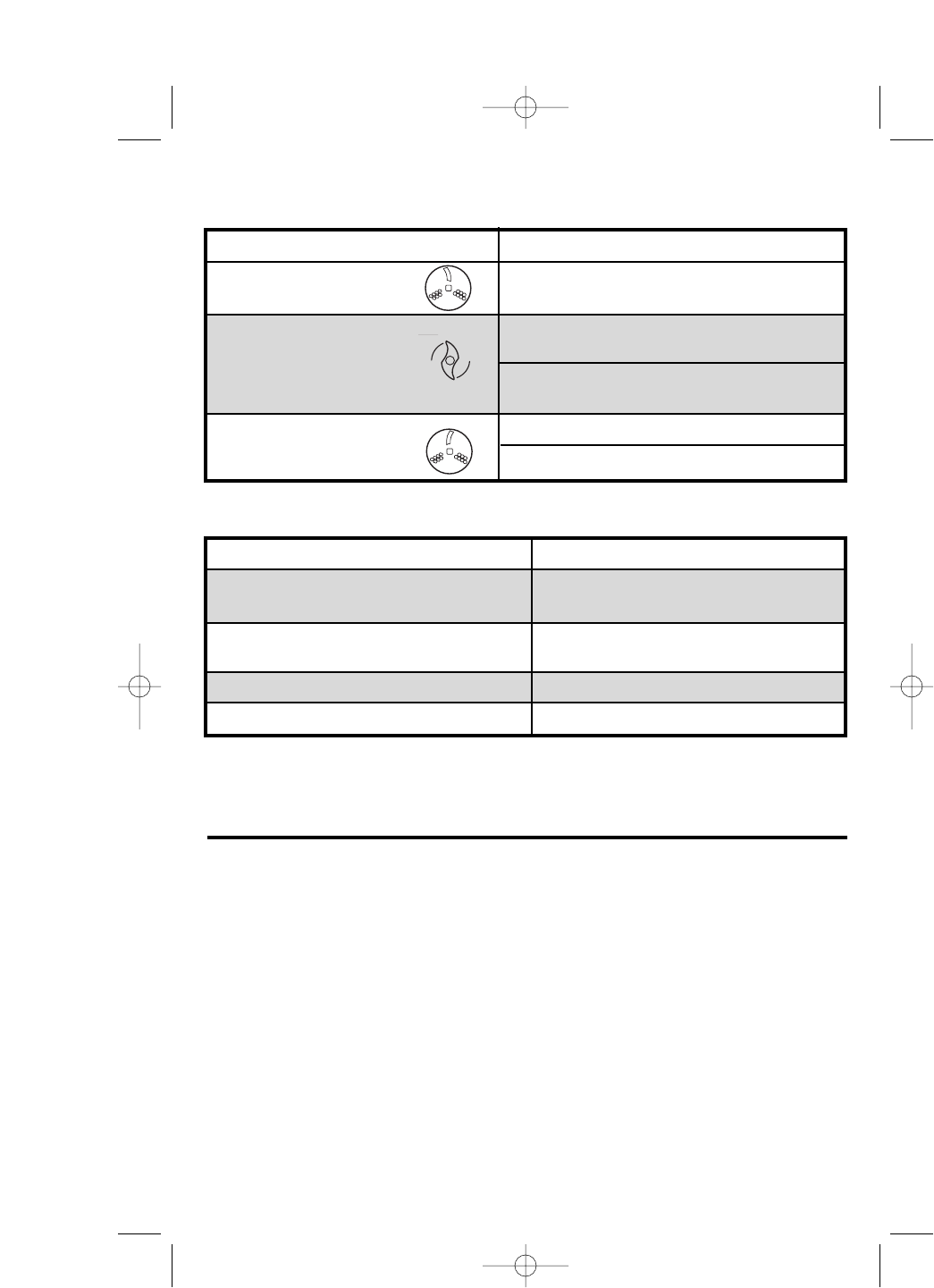
8
Food Processing Charts
ATTACHMENT FOODS
Slicer disc
Cucumbers, apples, mushrooms,
vegetables, potatoes, cabbage
Chopping/Mixing Blade Chop nuts, mince vegetables, fruit
mushrooms, carrots
Chop cooked meat, puree food,
grate cheese
S
hredder disc
Vegetables, cabbage
Firm cheeses
(slicing blade facing up)
(shredding teeth facing up)
FOOD MAXIMUM AMOUNT
Fruits and vegetables
1 pound or 2 to 3 cups
(450 g or 500 to 750 ml)
Meats (cooked) 12 ounces or 1
1
⁄
2 cups, cubed
(350 g or 375 ml)
Parmesan or Romano cheese 5 ounces (140 g), cubed
Cheddar, Jack, or Mozzarella cheese 8 ounces (225 g), cubed
For best results do not exceed the following amounts when chopping, mincing,
or pureeing with the Chopping/Mixing Blade.
Processing Tips and Techniques
• For a uniform consistency when
chopping, leave room in the bowl for
the food to be tossed around.
• Also for a more uniform consistency,
start with pieces of food that are
similar in size. Carrots, for example,
should all be cut in 1-inch (2.5 cm)
chunks. Do not process 4-inch (10
cm) pieces with
1
⁄2-inch (1 cm) pieces.
• This food processor is excellent to
chop, mix, slice, or shred most
foods. However, to maintain peak
performance, do not use your food
processor for the following: grinding
grain, coffee beans or spices; slicing
frozen meat; or crushing ice.
• Do not puree or mash starchy
vegetables like potatoes. They will
be over-processed in a second and
turn gummy.
• Operating time will depend on quantity
of food being processed. Most foods
can be sliced, chopped, or shredded
in seconds. Do not operate processor
for more than 1 minute at a time. If
processing large quantities, let the
processor rest about 1 minute before
continuing.
• Do not make bread dough or cookie
dough in this food processor. It may
damage the unit.
840122300 Ev03.qxd 1/6/04 11:30 AM Page 8



